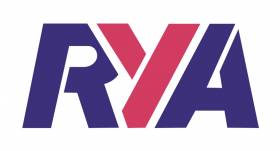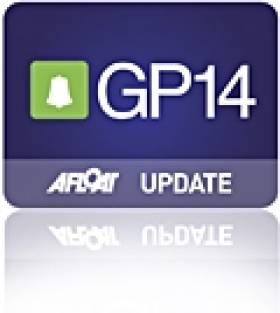Displaying items by tag: Donaghadee Sailing Club
Donaghadee Sailing Club to Host Women on the Water Festival
Donaghadee Sailing Club is hosting a Women on the Water festival starting on 20th May; tickets are on sale now.
This event is an opportunity for beginners and women who may have been active before but are looking to gain more confidence. It is an opportunity to meet new people and take part in several on water activities.
There will be dinghy and keelboat sailing, stand up paddleboarding, powerboating, coastal rowing and, as an optional extra, snorkelling. You are not required to complete a WOW programme previously but are interested in learning more about boating and other watersports.
Donaghadee Sailing Club lies near the harbour in the town on the North Down coast near the eastern end of Belfast Lough.
Ticket sales will close on Tuesday, 9th of May, to enable the sailing club, event organisers and volunteers to prepare for the event. Tickets here
Donaghadee Sailing Club in Northern Ireland recently signed up to become an OnBoard club, as part of the RYA’s grassroots programme to get young people aged 8-18 into sailing and windsurfing.
With the club in the focus of RYA’s Spotlight series this month, Commodore Steve Dickson explains the motivations behind the move.
“Since the club participated in the pilot scheme of the Bright Nights Programme a number of years ago, it was an obvious step to make the jump, getting further resources into our hands to reintroduce our scheme post-Covid,” he says.
OnBoard at Donaghadee has brought about a “fun and informal” youth sailing training environment since last August as pandemic restrictions eased.
“We’ve ambitious plans to have another pre-Covid year again like 2019 with almost 100 new junior/family members, and our multiple Friday evening sailing sessions booked out,” Dickson says.
“We all long for those carefree balmy summers evenings again, the buzz around the club, our beautiful harbour and Donaghadee sound full of young people having fun on our fleet of Toppers and Picos.”
That’s not to mention “the safety boat crews teased by the BBQ in the courtyard wafting the smell of the fresh Jim Davenport burgers in their direction as the food and social evening gets going with the sailors and families from the first of three sessions”.
While first moves in 2021 were tentative, as the programme was only open to existing members and their families, Dickson says the club plans development training with its instructors to prepare them as things ramp up in 2022.
As what what's next for Donaghadee as an OnBoard centre? Dickson is excited for the future: “Opening back to our wonderful local community again in 2022, both for our Friday BNS sailing, school and youth groups, exploiting the resources and training opportunities available from the OnBoard scheme.”
Young Donaghadee Sailor Has Big Plans As He Begins Second Year In Topper From John Merricks Sailing Trust
Charlie O’Malley from Donaghadee Sailing Club has spent the last six months getting on the water as much as he can in his Topper awarded by the John Merricks Sailing Trust (JMST) and RYA OnBoard partnership.
Since its launch in 2013, the partnership has supported youth sailors who display enthusiasm, drive, talent and commitment to the sport but may not ordinarily have had the opportunity or financial backing to achieve their goals.
In its six years, 76 boats and boards have been donated across the UK — with 10 of these awarded in Northern Ireland, and some remarkable success stories.
Charlie first got into sailing when he joined his friends to take part in Bright Night Sailing — an initiative where young people learn the basic skills of sailing while meeting new friends along the way.
He says that winning the boat meant a lot to him: “I was speechless for the first time ever! I was so excited, I was jumping up and down in joy. Especially when I saw the delivery truck coming down the street towards me.
“When I started racing I borrowed a club Topper. It was pretty basic but it got me started and I was coming last every time.
“When I got my own boat from JMST and RYA OnBoard, I had it out for the first day and I did very well. That made me feel very grateful and made me more confident in the water.”
Charlie hasn’t wasted a moment since he was awarded the boat, he says. “I sail five times a week — sometimes six — with my boat at different clubs. I sail mostly at Donaghadee but I also enjoy trying different waters at different clubs.
“It has helped me lots because now I can go to different places to sail and to sail in national events such as the Youth Nationals and the Irish Topper Nationals.”
He says that he enjoys the social side of sailing and meeting new people but he also enjoys competing.
“I had achieved a lot since I got the boat. I won a series in Donaghadee Sailing Club and won the [Centenary] Regatta in Ballyholme Yacht Club. I also did my first three-day event in my boat at the Nationals.
“Sailing gives me something to do in my spare time that I really enjoy and something that I can carry on throughout my life.”
After meeting one of his sailing heroes at the RYANI Annual Awards earlier this year, Charlie says he is inspired to follow in his footsteps.
“My inspiration would be Ian Walker because he started in a Topper and slowly worked his way up to Olympic level, meeting new people and sailing with friends. I want to do the exact same thing when I grow up.”
Charlie has got big plans before he gives the boat back next year and hopes to continue on his winning streak.
“Before I give back the Topper I would like to have competed in the worlds and get a few more trophies elsewhere,” he says.
RYANI’s high performance manager Matt McGovern said: “I have met Charlie several times since the JMST awards, at several different sailing clubs, and I have been extremely impressed with his attitude and keenness to get out on the water.
“Getting enthusiastic young sailors access to boats and helping give them time on the water is what this award is all about.
“I can think of no better example than that of Charlie. I will not be surprised if we see him rising through the ranks of the RYANI Performance Programme over the coming years.”
Applications for this year’s John Merricks Sailing Trust are now open and further information can be found HERE.
Donaghdee Sailing Club Hosts GP14 Ulster Championships
#gp14 – The GP14 Ulster Championship took place at the weekend, 28-29th June, at Donaghadee Sailing Club. A fleet of 25 boats took to the water on Saturday on a cracking day for sailing - constant strong wind and sunshine greeting the crews for the day's racing.
The event was sponsored by "Stairlift Solutions".
Race officer for the weekend was the well-seasoned James McKee, ably assisted by his own crew of handpicked and experienced helpers. Once the committee boat was finally secured at anchor (we won't go into that one) and a few mark adjustments made due to shifting winds (a task loved and endeared by the safety boat crews with precise positioning instructions provided by the PRO), the first of the day's races got off around 1 o'clock. This was a tight race in many ways and the strong tide caught a few crews off-guard as they approached the leeward mark, only to be "mashed" in close proximity with other crews suffering the same fate.
There were some reports of "rammed boats", "timber splintering" and offenders getting dizzy with 720's. One crew who shall remain nameless apparently will have 3 fleet insignia Bells stencilled on the side of their boat! Escaping from the carnage, Sutton Dinghy Clubs' Alan Blay & David Johnston took line honours in race one.
With the weather conditions remaining steady, PRO James McKee ensured little time was wasted before the start of race 2. This provided more of the same conditions with the winners this time Curly Morris & Laura McFarland from Newtownards Sailing Club.
Race three was accompanied by the onset of fatigue for some teams as crews began to tire due to the prolonged effect of the wind and sailing conditions with one or two boats deciding to call it a day before the race. However for the remaining crews battling for position on the start line, the 3rd and final race of the day began in great conditions and provided for an exciting race that was ultimately won by Niall Henry & Ossian Gerraghty of Sligo Yacht Club.
After the days racing, with all boats and crew safely on shore the fleet retired to the club house for a well-deserved supper and the odd exchange of insurer details.
Sunday again was blessed with glorious sunshine, however the wind had dropped overnight to little more than a light puff and even this was intermittent. James McKee postponed the planned race start as crews and organisers mulled about the club house and the dingy park waiting for a decision. Eventually just before noon it was decided by consent to go for a start and crews set out for the days racing.
A further two races were held with Dan & Hugh Gill from Sutton Dinghy Club taking 1st place honors in race four. The final race of the event was won by John & Donal McGuinness from Moville Boat Club. Once all were safely ashore the final results revealed that overall event winners were Alan Blay & David Johnston from Sutton Dingy Club. Prizes were awarded by the event sponsor Ken Wallace of Stairlift Solutions.
Donaghadee Sailing Club commodore Nick Butler thanked participants and all those whose efforts contributed to a very successful weekend and whose numbers are too many to note here - you know who you are and thank you! The final say went to Lawrence Balham who reminded all about the upcoming Irish championships at Sligo YC and the upcoming GP14 World Championship at East Antrim - if you have not yet registered please do so soon.































































